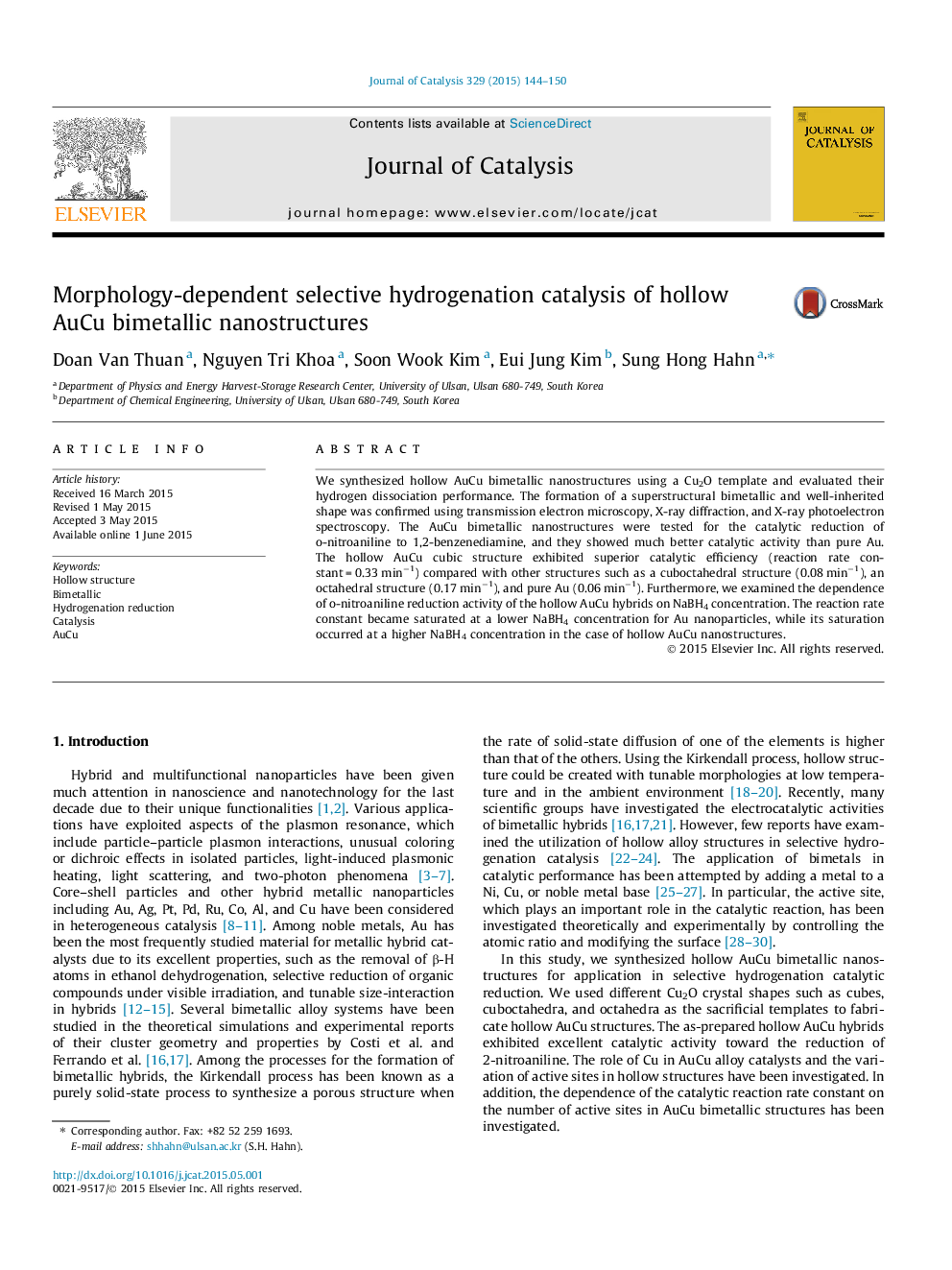| Article ID | Journal | Published Year | Pages | File Type |
|---|---|---|---|---|
| 60803 | Journal of Catalysis | 2015 | 7 Pages |
•Fabrication of cubic, cuboctahedral and octahedral bimetallic AuCu hollow structure.•Synthesizing AuCu by galvanic replacement of Au3+ on Cu2O templates.•The cubic hollow structure of AuCu exhibits a superior catalytic efficiency.•Investigating the role of Cu in catalytic performance of bimetallic AuCu.•Investigating the dependence of reaction rate constant to NaBH4 concentration.
We synthesized hollow AuCu bimetallic nanostructures using a Cu2O template and evaluated their hydrogen dissociation performance. The formation of a superstructural bimetallic and well-inherited shape was confirmed using transmission electron microscopy, X-ray diffraction, and X-ray photoelectron spectroscopy. The AuCu bimetallic nanostructures were tested for the catalytic reduction of o-nitroaniline to 1,2-benzenediamine, and they showed much better catalytic activity than pure Au. The hollow AuCu cubic structure exhibited superior catalytic efficiency (reaction rate constant = 0.33 min−1) compared with other structures such as a cuboctahedral structure (0.08 min−1), an octahedral structure (0.17 min−1), and pure Au (0.06 min−1). Furthermore, we examined the dependence of o-nitroaniline reduction activity of the hollow AuCu hybrids on NaBH4 concentration. The reaction rate constant became saturated at a lower NaBH4 concentration for Au nanoparticles, while its saturation occurred at a higher NaBH4 concentration in the case of hollow AuCu nanostructures.
Graphical abstractFigure optionsDownload full-size imageDownload high-quality image (100 K)Download as PowerPoint slide
